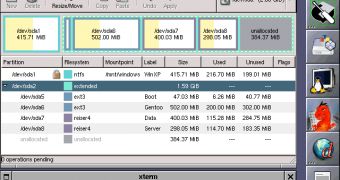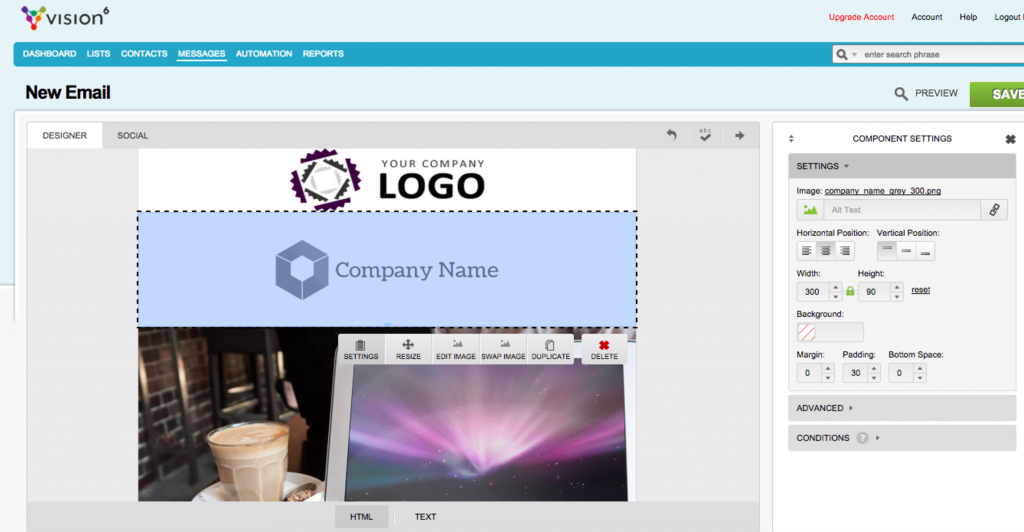40 linux list disk labels
linux - List partition labels from the command line - Unix & Linux ... 5. This will not list all partitions but you can view and alter what you like with tune2fs. $ sudo tune2fs -l /dev/sda1. You can use a command such as this to get all the /dev/sda* devices. $ sudo sh -c 'echo /dev/sda* /dev/mapper/fedora* | xargs -n 1 tune2fs -l'. Share. Improve this answer. 6 Different Ways to List Disks in Linux Command Line The df command in Linux is probably one of the most commonly used. It lists the actual "disk space usage" and it can give you information about what hard disks (or current disk space) is being used in the entire system. The most common way to use it is with the -h argument which means "human readable" (because we are not machines, right?):
How to List Unmounted partition of a harddisk and Mount them? 4. sudo blkid -o list. will list all the mounted and unmounted partitions. In addition you can use mount and df to see all mount points. mount -t type device destination_dir. can be used to mount your device/partition. Share. Improve this answer. answered May 21, 2015 at 4:41.

Linux list disk labels
IT Infrastructure | IBM Use your preferred Linux® solution, including Red Hat®, SUSE, or Ubuntu, on secure IBM servers. Explore Linux servers. Resources. A guide to modernization . See how modernization and a culture of change work together. Explore the ebook A hybrid cloud strategy. Uncover findings from IT leaders on hybrid cloud. Read more LinuxONE for Dummies. Get the guide to … How to get disk partition UUID in Linux - Simplified Guide UUID is typically just a symlink to the actual device name in /dev directory, and you can get the UUID of a partition by browsing /dev/disk/by-uuid / directory. There are also some command-line programs that you can use to get partition UUID in Linux . Steps to get partition UUID in Linux: Launch terminal. List partition UUID from /dev. How to Change Linux Partition Label Names on EXT4 / EXT3 / EXT2 and Swap Below you can find listing of all such commands. 1. e2label or tune2fs The commands e2label or tune2fs used for changing label of ext2, ext3 and ext4 type partitions. # e2label /dev/sda1 ROOT OR # tune2fs -L ROOT_PART /dev/sda1 Here, ROOT and ROOT_PART are the labels to be added to /dev/sda1 which is ext4 formatted partition. 2. ntfslabel
Linux list disk labels. disk - List all partition labels - Ask Ubuntu Simply labels? $ ls /dev/disk/by-label/ Download MuruHome Ubuntu Windows8 arch Or better: $ tree /dev/disk/by-label/ # or use ls -l /dev/disk/by-label/ ├── Download -> ../../sda6 ├── MuruHome -> ../../sdc2 ├── Ubuntu -> ../../sdc1 ├── Windows8 -> ../../sda2 └── arch -> ../../sda1 4 Ways to Show all Drives (Mounted and Unmounted) on Linux Display all Drives on Linux. To display all of your drives on a Linux system, you can perform any of the following four methods: Method # 1: Using the "fdisk" Command. The "fdisk" command can be used to display the drives in Linux in the manner shown below: $ sudo fdisk -l. The output produced by this command is shown in the following ... fstab - ArchWiki - Arch Linux The fstab(5) file can be used to define how disk partitions, various other block devices, or remote file systems should be mounted into the file system.. Each file system is described in a separate line. These definitions will be converted into systemd mount units dynamically at boot, and when the configuration of the system manager is reloaded. The default setup will automatically fsck … List Device Names, Disk and Partition Information in Linux with lsblk lsblk -o +FSTYPE,LABEL Show Removable Devices/USB Memory Sticks lsblk -o +RM will display an extra column that tells you if the device is removable. A "1" value means "true," which indicates a USB stick or other types of removable media. Show HDD/SSD Model
Ls Command in Linux (List Files and Directories) | Linuxize Copy. To list files in a specific directory, pass the directory path as an argument to the ls command. For example, to list the contents of the /etc directory, you would type: ls /etc. Copy. You can also pass multiple directories and files separated by space: ls /etc /var /etc/passwd. Copy. How To - Linux List Disk Partitions Command - nixCraft lsblk Command to list block device on Linux To list all block devices, run the lsblk command: $ sudo lsblk $ sudo lsblk /dev/DEVICE $ sudo lsblk /dev/sda $ sudo lsblk -l # use the grep command /egerp command to filter out info # $ sudo lsblk -d | grep disk Three applications for making disc labels - Linux.com gLabels allows you to print both CD booklets and labels for the discs themselves. The inclusion of paper templates and the ability to fairly quickly make your own, guided by a well designed wizard, is a wonderful feature. Kover's interface lets you make a jewel case quickly, though for more involved designs you might like to use gLabels. How To List Disk Partitions In Linux - OSTechNix There are many ways to view disk partitions in Linux. First, we will start with lsblk command line utlity. 1. List disk partitions in Linux using lsblk command The lsblk utility is used to display information about a specified block device as well as all available block devices, along with their partitioning schemes in Linux.
wiki.archlinux.org › title › ZFSZFS - ArchWiki - Arch Linux Disk labels and UUID can also be used for ZFS mounts by using GPT partitions. ZFS drives have labels but Linux is unable to read them at boot. Unlike MBR partitions, GPT partitions directly support both UUID and labels independent of the format inside the partition. Partitioning rather than using the whole disk for ZFS offers two additional ... how to list all hard disks in linux from command line There are several different commands that you can use in a Linux environment to list disks that have been mounted on the system. df The df command is primarily intended to report file system disk space usage. It is still a good utility to print out the disks that are available to the system, although it prints filesystems rather than disks per se. Mounting Partitions Using UUID and LABEL on Linux LABEL on the other hand is a short name that you can put it when you format a partition to identify the disk. Many people can use the same LABEL. So, the uniqueness of LABEL depends on how creative you are at naming your partitions. In this article, I will show you how to mount partitions using UUID and LABEL using the /etc/fstab file on Linux ... Question: How Do I View Labels In Linux - PostVines Creating a Disk Partition in Linux List the partitions using the parted -l command to identify the storage device you want to partition. Open the storage device. Set the partition table type to gpt , then enter Yes to accept it. Review the partition table of the storage device. How do I change a disk label?
show all unmounted disk labels? - LinuxQuestions.org Some distros of Linux don't have the /dev/disk/by-label/ directory (mine doesn't) so that can't be used. fdisk -l doesn't show labels (at least it doesn't on mine). There are various tools that let you ask a drive what its label is (e2label, mlabel, ntfslabel, etc.) but they generally require that you know which device it is, which is often ...
Linux - Logical Volume Manager (LVM) Command Examples Linux LVM command examples. Popular LVM command examples for Linux systems and servers. Howto create Physical Volumes (PV), VolumeGroups (VG) and Logical Volumes (LV). Howto increase the size of a Linux file system. Adding disk to a LVM managed system.
The Linux LS Command - How to List Files in a Directory + Option Flags List files and output the result to a file. Type the ls > output.txt command to print the output of the preceding command into an output.txt file. You can use any of the flags discussed before like -la — the key point here is that the result will be outputted into a file and not logged to the command line. Then you can use the file as you see ...
Label a Linux Partition - nixCraft /boot Set a new label If the optional argument new-label is present, then e2label will set the filesystem label to be new-label. Ext2 filesystem labels can be at most 16 characters long; if new-label is longer than 16 characters, e2label will truncate it and print a warning message. To set a new label, enter: # e2label /dev/sdb2 usbstroage
› it-infrastructureIT Infrastructure | IBM With the right servers, storage and technologies, you can apply a zero-trust approach to protect against breaches, keep data private across hybrid ecosystems and unify data protection with cyber resilience.
› linux › man-pagesfdisk(8) - Linux manual page - Michael Kerrisk And vice-versa it is possible to write the current in-memory disk layout to the script file by command 'O'. The script files are compatible between cfdisk(8), sfdisk(8), fdisk and other libfdisk applications. For more details see sfdisk(8). DISK LABELS top
fdisk : how to label a partition? - LinuxQuestions.org For volumes that already have a label, there is an elegant method to discover which device is associated with each mounted volume. Open the terminal and type "ls /dev/disk/by-label -lah" and a list of devices and their labels will result. The problem is, devices which are mounted without labels will not be listed.
unix.stackexchange.com › questions › 157154How to list disks, partitions and filesystems in Linux? There are many tools for that, for example fdisk -l or parted -l, but probably the most handy is lsblk (aka list block devices):. Example $ lsblk NAME MAJ:MIN RM SIZE RO TYPE MOUNTPOINT sda 8:0 0 238.5G 0 disk ├─sda1 8:1 0 200M 0 part /boot/efi ├─sda2 8:2 0 500M 0 part /boot └─sda3 8:3 0 237.8G 0 part ├─fedora-root 253:0 0 50G 0 lvm / ├─fedora-swap 253:1 0 2G 0 lvm [SWAP ...






Post a Comment for "40 linux list disk labels"